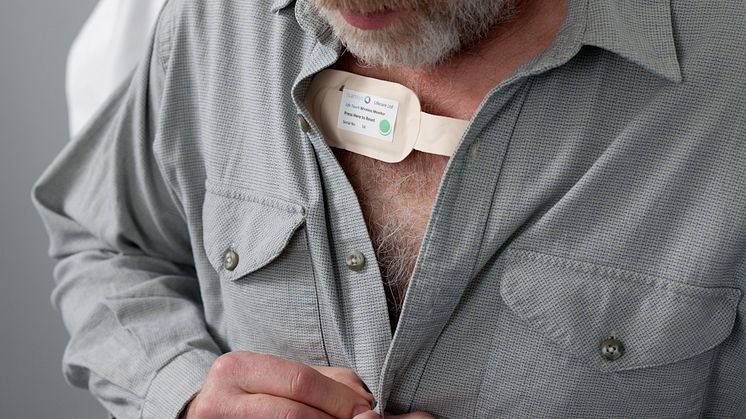
Blog post -
Sepsis can be detected early using new technology enabling patients to receive timely treatment
Research by BBC News this week showed that a quarter of patients with sepsis have experienced delays in getting treatment. Hospitals are supposed to put a person on an antibiotic drip within an hour if sepsis is suspected but research by BBC News suggests a quarter of patients in England wait longer. Delays raise the chance of potentially fatal complications such as organ failure and even death.
It doesn’t have to be like this. New wireless monitoring technology, developed by a UK company which can detect the onset of sepsis in patients fast is already on the market.
The Patient Status Engine, a wireless monitoring system designed and developed by Isansys Lifecare in Oxfordshire, uses body-worn “smart patch” sensors to collect vital signs automatically, continuously and in real-time. The platform then uses this data to flag up any changes in a patient’s condition and alerts clinicians to what could be the early onset of sepsis faster than they would have otherwise been able to detect it.
Keith Errey, CEO of Isansys, said: “Being able to identify patients at the highest risk of deterioration is key for clinicians and nurses. Too often their workloads are overwhelming and they don’t have time to observe their patients closely at all times. Our technology does this for them and provides earlier indications of patient deterioration than can’t be achieved with manual monitoring alone. This is invaluable in the global fight against sepsis.
“Not only does the PSE provide early warning scores and alerts when a patient’s vital signs significantly change but it also allows the real-time monitoring of patients’ responses to treatment. This enables timely interventions which enhance the care and safety of patients.”
Although the PSE has been trialled in NHS hospitals, most notably at the Birmingham Women's and Children’s NHS Foundation Trust, the well documented problems of funding and new technology adoption in the NHS mean that this lifesaving innovation is not yet standard care throughout the NHS. However, patients in other countries are luckier with hospitals in Europe, the US, India and Australia currently working on programs to adopt the PSE as the new standard for monitoring patients, in order to improve patient safety in general and in particular, reduce the number of deaths and major adverse events resulting from the late diagnosis of sepsis.
And it is not only adult patients. Isansys is also working with the Northwell Health Group in New York on a major study which shows wireless continuous monitoring of mothers in labour using the PSE promises new insights in neonatal care, maternal fever being a significant predictor of early onset neonatal sepsis.
In a response to the research by the BBC, NHS England said there were signs performance was improving but reports from families affected by sepsis show more still needs to be done.
In one BBC report, Hayley Scott, whose husband Simon died from sepsis, said she was "angry" at the delay in treating him with antibiotics. She said Simon waited six days to get treated, despite his hospital notes suggesting he should have been on them from day two. The hospital said there were "areas of learning" resulting from his case.
Dr Ron Daniels, of the UK Sepsis Trust, said the "concerning" figures showed patients were being put at risk.
Dr Daniels said the one-hour window was "essential to increase the chances of surviving" and that there is no reason why it should take longer.”
The Sepsis Trust believes there are about 250,000 cases every year in the UK - and more than 50,000 deaths.